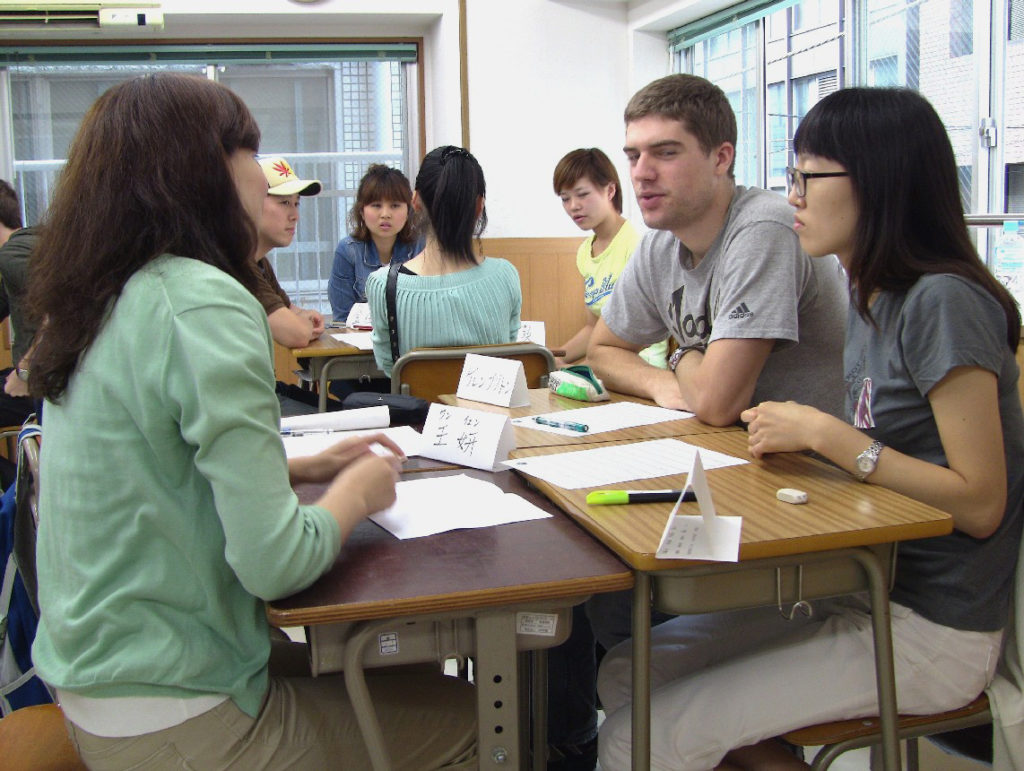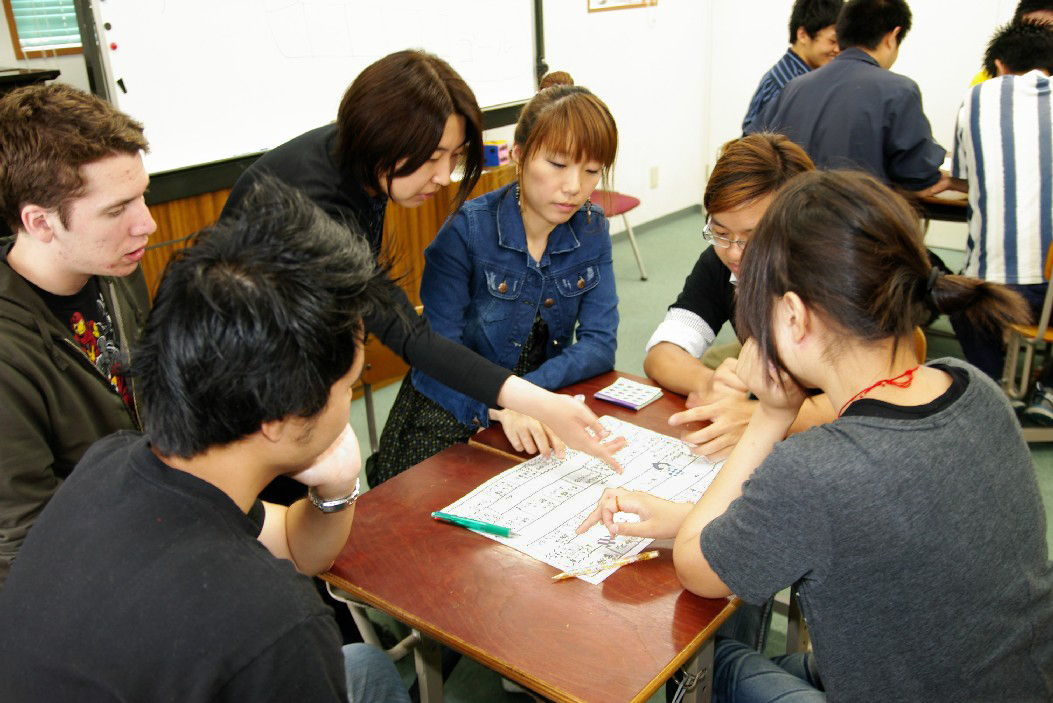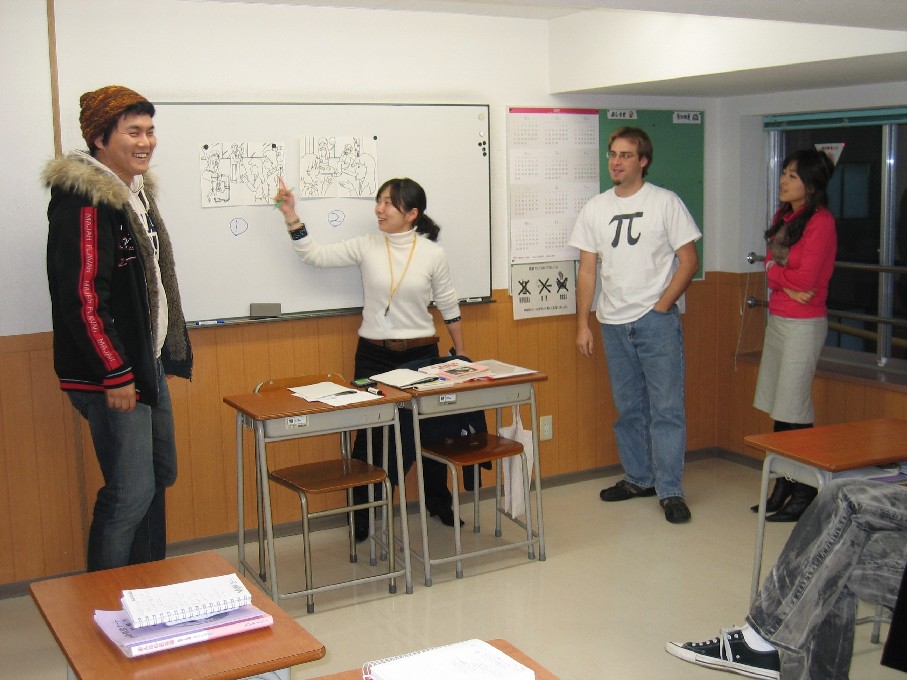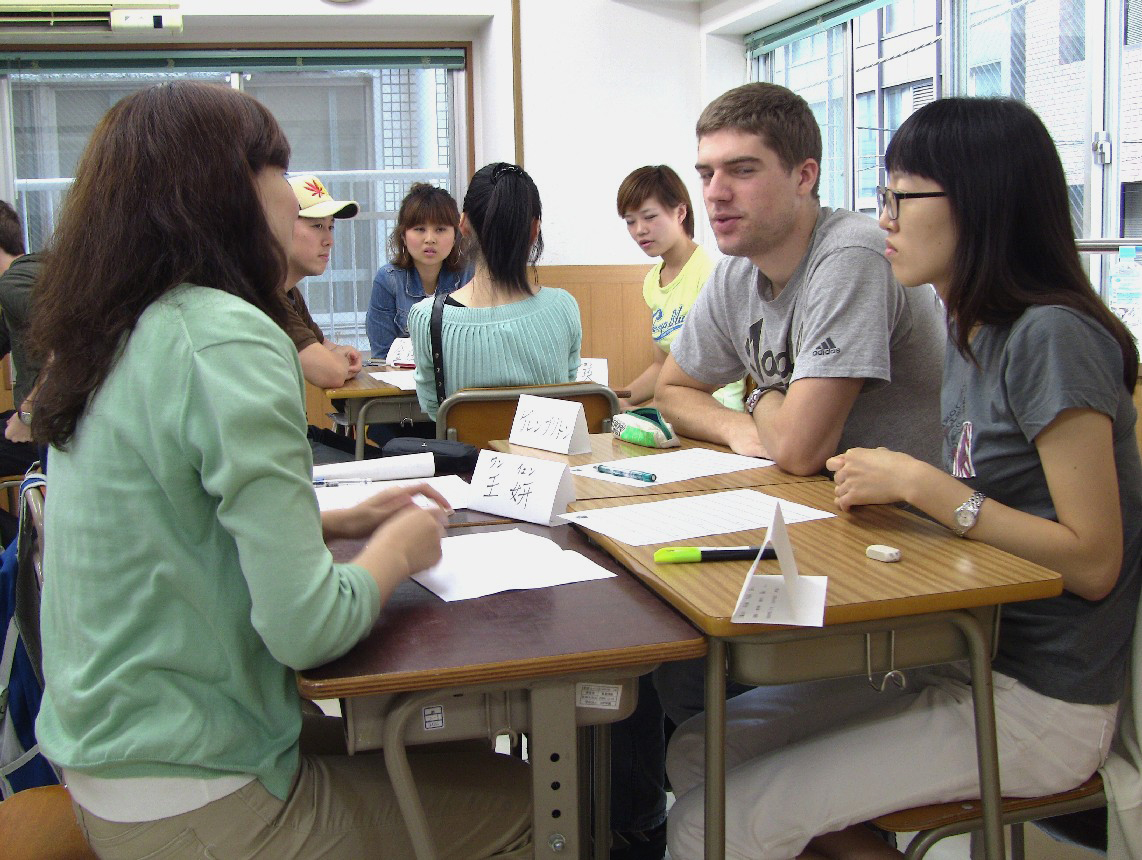
Why I’m going back
Contributed by Humphrey Lena
I began studying Japanese in 2006, at Bunker Hill Community College. My desire to experience Japan firsthand led me to the KCP summer short term program in Tokyo. This experience changed my life! I decided to dedicate myself to mastering the Japanese language and to Japanese-influenced graphic design.
KCP International has a convenient office in America. Michael Anderson, the U.S. director, promptly responded to my emails and took care of all my planning, so that when I arrived in Tokyo all my arrangements with housing, transportation, and school were set.
Now, I’m going back for the full-year program. When I arrive at Narita International Airport, KCP student coordinators will be there, ready to escort me to my dorm and help me begin my studies. I am confident that KCP will place me in a healthful living environment where I can make Japanese language and culture immersion top priorities.
Learning
The courses at KCP cover 6 levels of language ability. The instruction schedule is 4 classroom hours, 5 days a week (over 220 hours per semester). Classes run in morning and afternoon. Students also take part in small group sessions and outside-class study. The level of learning in one semester at KCP is equal to one year of Japanese learning in the U.S. Successful students study 3–5 hours every day.
Classes hold between 15 and 20 students—small, guaranteeing excellent student-teacher relationships. The student-to-teacher ratio is 11 to 1. With 3 instructors in every classroom, students definitely get the attention they need.

I’ll be taught 150 to 250 kanji each semester, depending on my level of Japanese. The level is determined by a placement test at the beginning of the term. KCP has a reputation for having most of its advanced students pass the highest level of the Japanese Language Proficiency Test (JLPT). A further year of studies at KCP will give me the knowledge to pass the JLPT.
The campus is the main office, classrooms, a study room, meeting and lunch rooms, a computer room with Internet access, and a sick room. As a KCP student I have a language advisor and a student coordinator. KCP’s English-speaking staff provides language support for American students and also gives special tutorials.
At KCP, emphasis is on complete language education in all 4 communication skills: listening, speaking, reading, and writing. KCP also uses the direct method of teaching Japanese without a vehicular language: the student body is from across the globe and there is no common language other than Japanese. Most students are from other Asian countries (Korea, the Philippines, China, Thailand, and Taiwan), so we learn with a diverse student body.
Students have to think in Japanese by listening in Japanese. I prefer this, because translating Japanese into English and back again is counterproductive to communication.
Teachers
Every teacher at KCP is carefully evaluated for effectiveness and methodology by active observation and a series of interviews. KCP professors are like no others in the world because of the institution’s unique, innovative Japanese-language teacher preparation program.

My time at KCP has already shown me the phenomenal teaching skills of KCP staff. I studied under Kaito-sensei, the head professor for the American students and the greatest teacher of Japanese that I have ever encountered. She explained the language to me in a vibrant, easy-to-understand format, while challenging my learning abilities and raising the expectation bar. She was available before my afternoon classes to help with homework and practice dialogue. Her presence alone is enough reason for any avid learner to pack up and go to KCP.
I soon became familiar with a vital member of KCP, Tanaka-san. He taught Japanese history and took us on inspiring tours of traditional Japanese art: lacquer arts and crafts, handmade wooden models, and paintings. While abroad I trained in martial arts, and Mr. Tanaka helped me make arrangements. Martial arts training gave me more opportunities to practice Japanese in an informal setting.
I am deeply grateful to the staff at KCP. I was running low on funds and was not permitted to cash my U.S. money order. The post office wouldn’t cash it because I was a temporary foreign student and there was the possibility of fraud. The very next day, Mr. Tanaka put his and KCP’s reputation on the line by convincing the post office to make an exception for me. As a result, I was able to obtain my funds.
Working Together
At the end of the summer short-term came the speech contest: one candidate from each classroom would write and recite a speech in Japanese. I was selected to write the speech. One of the best aspects of this event was that the entire class had to come together in a 2-minute performance to warm up the crowd before their classmate’s speech. Out of 20 students in the class, only 4 of us were American. The project was a true test of our Japanese skills, making for some real term-end acceleration of abilities.
KCP offered me one-on-one tutoring while I was working on the speech. I wrote about making friends—from American students to Japanese roommates and Korean and Chinese classmates. During this period I began to feel myself thinking naturally in the Japanese language and communicating without pause. I managed to memorize my speech and performed it without the use of note cards or a paper copy. I won the award for best performance. That point in my life is a perfect example of how I fused creative thinking and Japanese. I was able to convey a Japanese message to a foreign audience!
Culture
KCP’s location in Tokyo is a big plus—with over 12 million people, it’s the center for academic achievement in Japan. The beauty of my surroundings adds depth to the Saturday culture course. We explore many artistic elements of Japanese society, a great chance for me to both indulge my creativity and acquire the simplified ways of Japanese everyday life.
KCP promotes Japanese cultural awareness with lectures and organized trips to some of the most notable happenings in Tokyo. Hearing lectures on classical and modern entertainment, culture, customs, lifestyles, business, economics, politics, history, psychology, and religion, informs my graphic design context.
KCP’s cultural course brings me to relevant sites such as temples, museums, the Imperial palace, broadcasting companies, theaters, and castles. We take part in workshops on traditional Japanese art forms—the tea ceremony, flower arranging, martial arts, origami, calligraphy, and music.

KCP International’s well-developed Japanese language and cultural programs will help me accomplish my mission to use graphic design for national and global issues.

